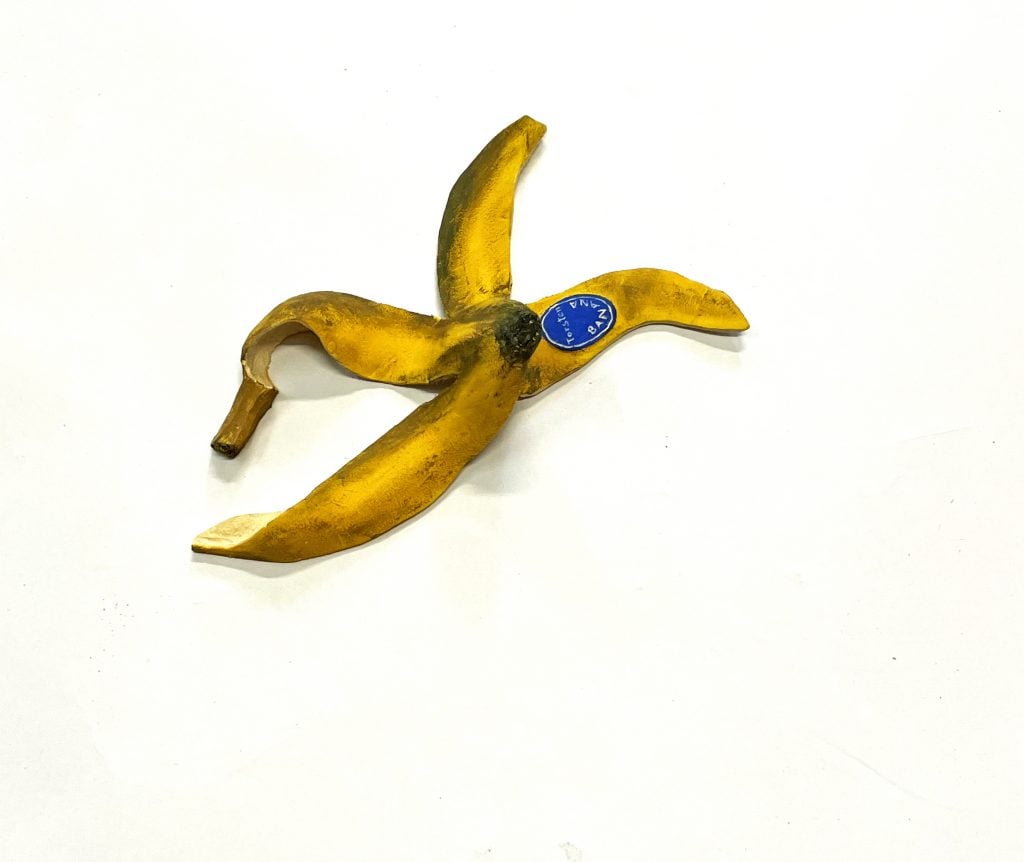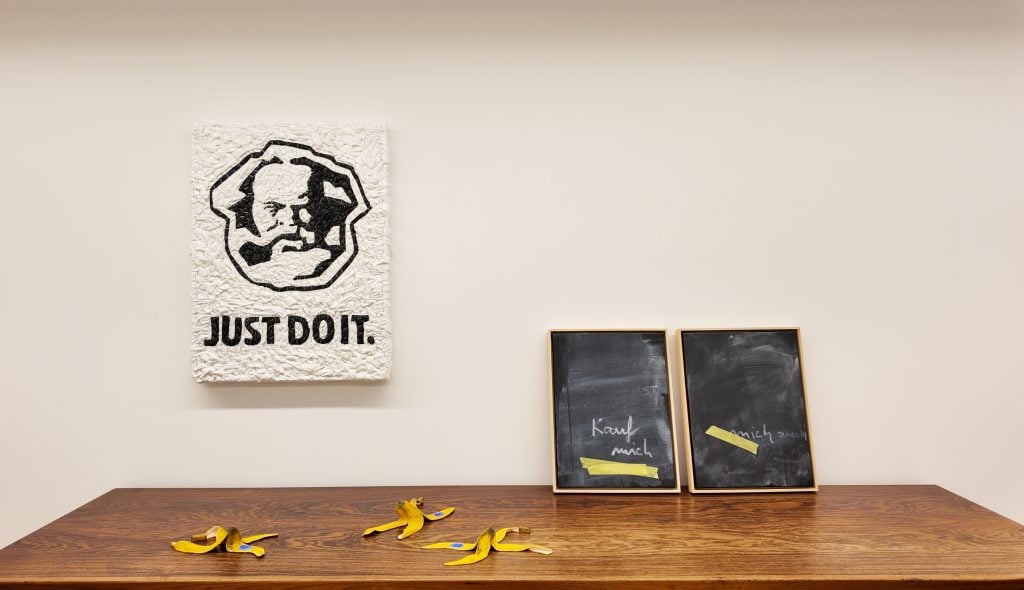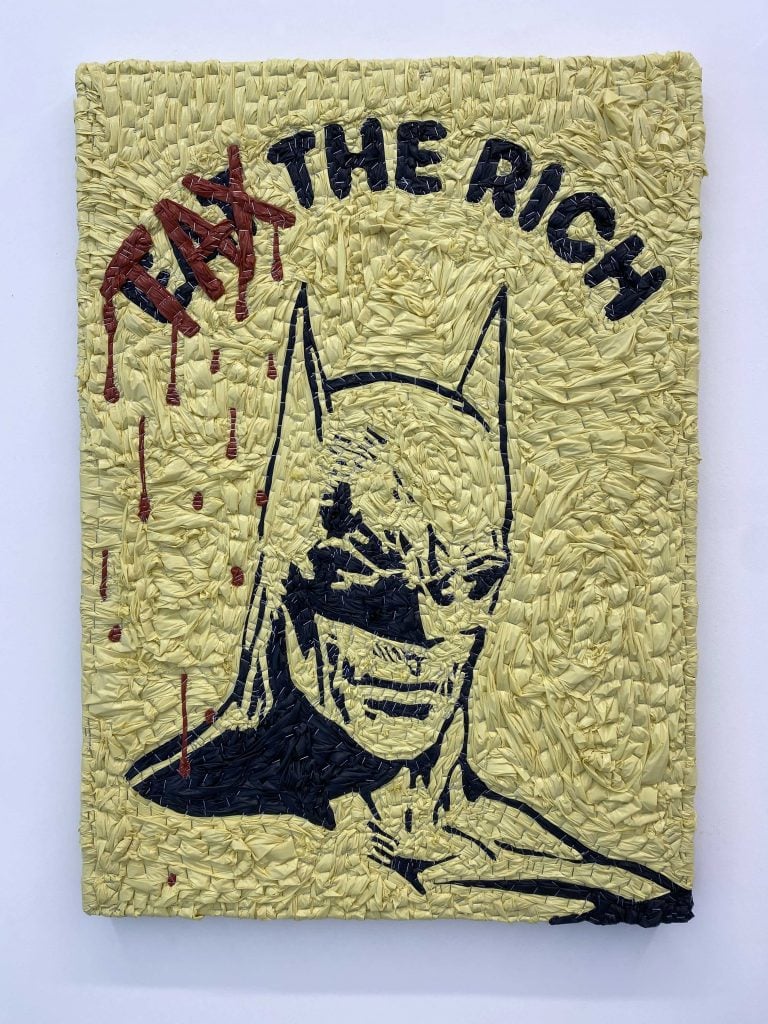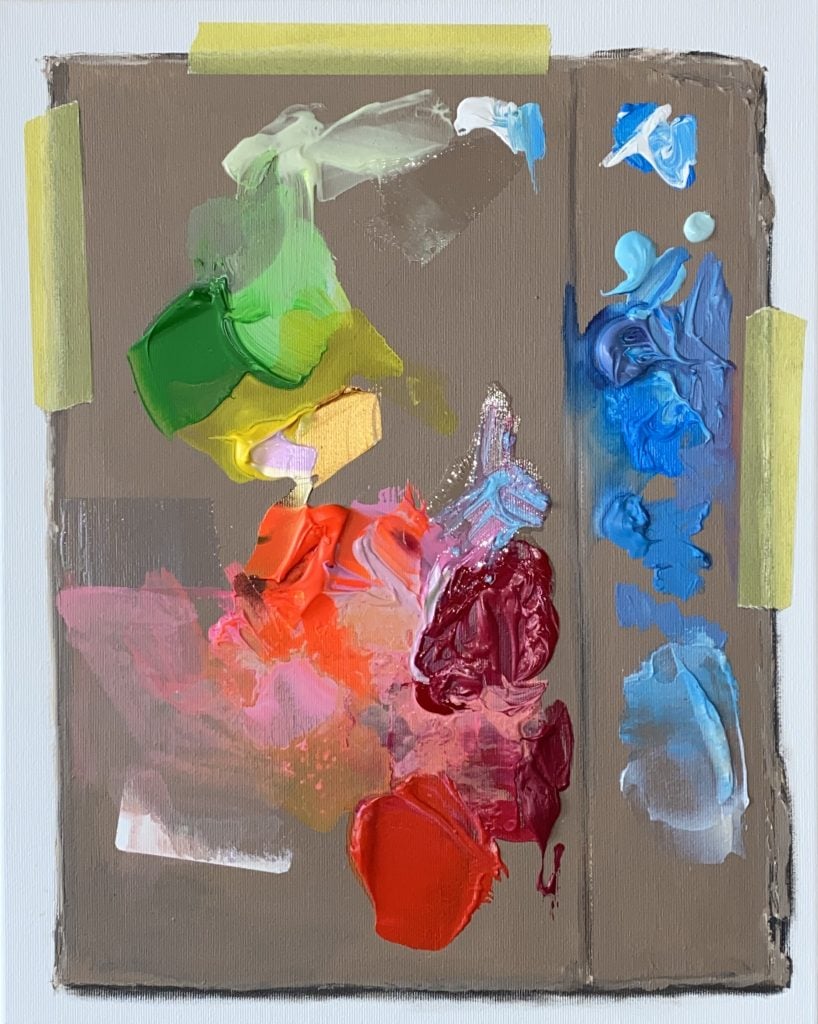Gallery Network
At Filser and Gräf, Artists Present a Wry Vision of Reality
On view in Munich, the show features the work of Sebastian Herzau, Torsten Mühlbach, and Jessi Strixner.

On view in Munich, the show features the work of Sebastian Herzau, Torsten Mühlbach, and Jessi Strixner.

Artnet Gallery Network

On view through October 31, 2024, Munich gallery Filser and Gräf presents the three-artist exhibition “Dreistigkeiten – Mehr dioptrien bringen uns auch nicht weiter,” or “Audacity – More diopters won’t get us anywhere.” Featuring the work of Sebastian Herzau, Torsten Mühlbach, and Jessi Strixner, the show takes a wry and inquisitive look at the myriad facets that comprise contemporary reality and lived experience. Adding another layer to the group shows interrogation of everything from pop culture and history to ideas around waste and what is discarded, the artists Herzau, Mühlbach, and Strixner all know each other, allowing for viewers to trace dialogues and references between each artist’s work.

Installation view of “Dreistigkeiten – Mehr dioptrien bringen uns auch nicht weiter” (2024). Courtesy of Filser and Gräf, Munich.
“Art is not a privilege, but a staple and every person should need it and have it available,” commented Mühlbach via the gallery’s press release. This sentiment can be observed throughout the show, wherein motifs of common, everyday object and items are rendered with empathy and precision. In Mühlbach’s work, cultural idioms are irreverently juxtaposed and sociological and media symbols take on new meaning. This can be seen in works like Just do it (2023), wherein the popular Nike brand slogan is under an image of Karl Marx. And, a common approach throughout the works on view, the piece has another tier of understanding: made from garbage bags stapled to wood, it offers both real and metaphoric commentary on the value given and derived from modern discourses.

Torsten Mühlbach, Eat the rich (2024). Courtesy of Filser and Gräf, Munich.
In Herzau’s acrylic on canvas works, the artist explores the art historical tradition of trompe l’oeil that present a poetic and contemplative reflection on how we perceive reality. Illusive and at times ambiguous, the paintings require closer looking, and question commonly held assumptions about how we engage with the world around us. Strixner’s work extends this train of thought by presenting pieces that instead very clearly represent recognizable objects—a discarded banana peel, a Post-it with a note jotted down, a sock—but with the hand of the artist still visible in its depiction. These common objects are conceptually raised as the objects of sculpture, resulting in questions about the hierarchy of value in contemporary society.

Sebastian Herzau, Stillleben abstrakt (2023). Courtesy of Filser and Gräf, Munich.
The three artists work, considered both individually and in dialogue with each other, speak to some of the most pressing conversations of today, and spotlight the ways our perceptions, both conscious and subconscious, influence reality.
“Sebastian Herzau, Torsten Mühlbach, and Jessi Strixner: Audacity – More diopters won’t get us anywhere” is on view at Filser and Gräf, Munich, through October 31, 2024.